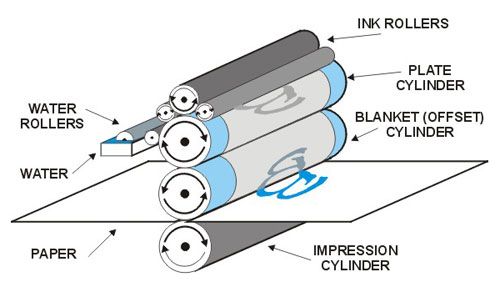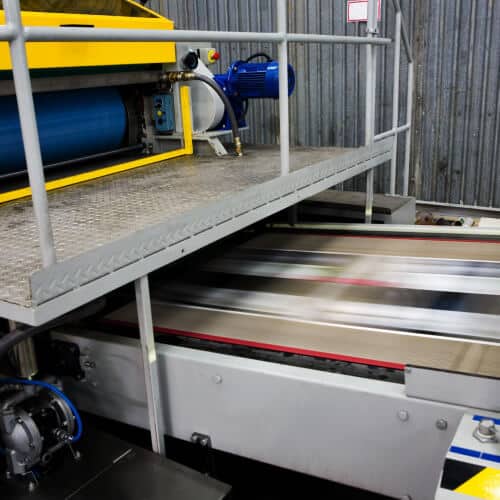A Comprehensive Overview to Comprehending Litho Printing Techniques
The world of litho printing, a method originating from the late 18th century, is a fascinating blend of background, technology, scientific research and art. This extensive overview will certainly untangle the intricacies of this printing technique, from the composition of litho inks to the difficulties faced in modern applications. As we venture right into the intricacies of lithography, the relevance of automation and sustainability in ensuring its future relevance ends up being significantly clear. Remain with us as we trip right into the captivating realm of litho printing.
The Historical Advancement of Litho Printing
The historic trajectory of litho printing, a crucial advancement in the realm of communication, is a fascinating story of human resourcefulness. The procedure developed with the development of the rotating press, which considerably raised performance. Each stage of litho printing's evolution showcases mankind's unrelenting quest of performance and high quality in visual communication.
Decoding the Science Behind Litho Printing Inks
Relocating onward in the exploration of litho printing methods, the emphasis now shifts to the science behind litho printing inks. The structure of these inks, their drying out procedure, and shade mixing techniques develop the foundation of this intricate art form. Comprehending these components is important to understanding the craft and achieving the wanted print results.
Structure of Litho Inks
In lithographic printing, the fundamental role of litho inks can not be overemphasized. Pigments, the color-providing aspects, are finely ground fragments put on hold in the car, a fluid that brings the pigment onto the printing surface area. Each component plays an important part in the final print's top quality, making the specific solution of litho inks an intricate scientific research.
Ink Drying Refine
From the make-up of litho inks, interest transforms to the remarkable procedure of ink drying out. The drying procedure is critical, as it impacts the last print's quality and durability. Two primary approaches are utilized in litho printing: oxidative drying out and absorption. Oxidative drying entails the ink reacting with oxygen airborne to develop a difficult, completely dry movie. This technique offers a long lasting surface, however can be slower contrasted to absorption. Absorption, on the various other hand, includes the ink leaking into the paper fibers, which is a quicker process yet can bring about less lively colors. The choice in between these techniques depends on factors such as print speed requirements, the paper type used, and the preferred coating.
Shade Combining Techniques
While the drying out procedure plays a vital duty in litho printing, the scientific research of color mixing techniques holds equivalent importance. The science behind litho printing inks also takes into account the openness of the ink, which impacts how colors overlay and mix.
The Art and Style Components in Litho Printing
Litho printing takes a breath life into art and design via its unique elements. Litho printing accommodates a variety of shades, enabling artists to create vivid and dynamic prints. This combination of accuracy and convenience makes litho printing a favored choice for several artists and developers.
Modern Applications of Litho Printing Techniques
Litho printing techniques have discovered comprehensive usage in the contemporary industrial industry. Its impact and significance remain to grow with the arrival of brand-new innovations and modern technologies in the area. This area will explore these contemporary applications and the transformative role they play in the printing industry.
Business Litho Printing Uses
In today's electronic age, one might question the importance of conventional printing approaches. Litho printing stays an essential part of the business market. High-volume printing tasks, such as the manufacturing of publications, newspapers, and product packaging, depend on litho printing for its ability to deliver remarkable picture high quality and expense efficiency. The procedure, which entails moving an inked image from a plate onto a rubber blanket and afterwards to the printing surface, supplies unmatched uniformity. This makes it optimal for jobs requiring a big print run. Litho printing likewise gives a broad color spectrum, exceptional to that Check This Out of electronic printing. This makes it the best option for tasks that demand vibrant, high-grade color recreation.
Innovations in Litho Printing
Pressing the limits of conventional techniques, contemporary advancements have sustained a host of innovations in litho printing. One prominent growth is digital litho printing, which integrates the virtues of digital modern technology with litho's top quality output. These innovations underscore the enduring importance of litho printing in the modern globe.
Exploring the Process of Litho Printing: Action by Step

Obstacles and Solutions in Contemporary Litho Printing

Despite the accuracy and custom that litho printing happily promotes, it is not without its set of modern challenges. The most widespread problems include the high first configuration price, trouble in printing variable information, and ecological problems due to chemical use. Nevertheless, options are becoming technology evolves. Digital litho printing enables affordable short runs and very easy modification, dealing with the concern of variable information. Environmentally-friendly inks and more secure plate-making procedures mitigate ecological concerns. Furthermore, developments in automation have actually minimized labor costs, better democratizing the lithography procedure. Hence, while there are difficulties, the litho printing industry is proactively adjusting to meet them head-on, ensuring its importance in the future.
Conclusion
In final thought, litho printing, with its rich background and clinical complexities, holds a substantial place in the redirected here print market. The future of litho printing hinges on its capacity to adjust to these transforming demands, verifying its enduring worth in a progressing market.
